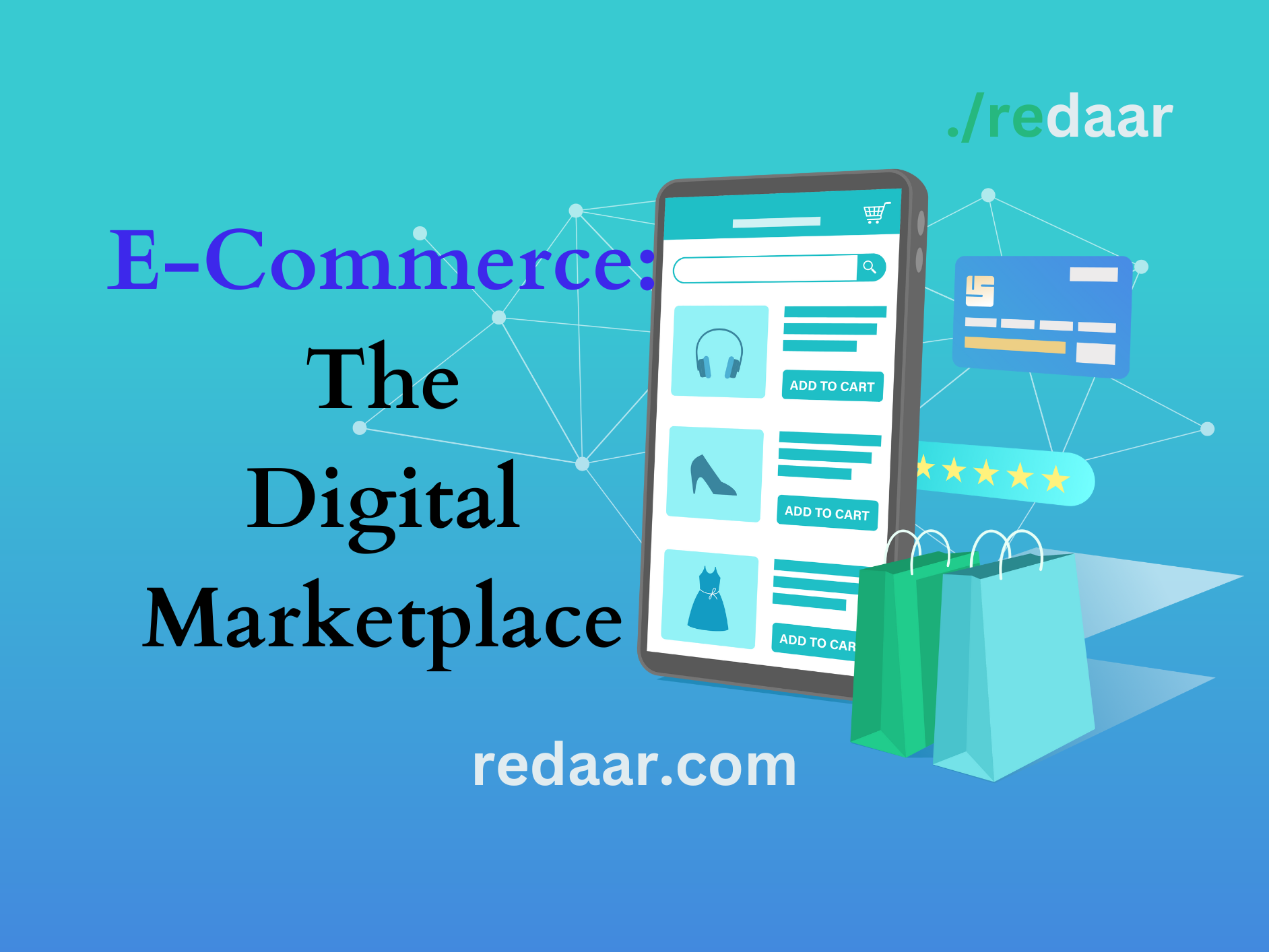In the modern age, the marketplace for products has been dramatically transformed by the advent of technology. E-commerce, often known as electronic commerce, has become a dynamic and vital force that has completely changed how consumers and corporations conduct business.
This article explores the world of e-commerce, looking at its history, development, influence on many industries, advantages, disadvantages, and current trends that are reshaping the digital market.
Origins and Evolution of E-Commerce
E-commerce has its origins in the 1960s when electronic data interchange (EDI) technology made it possible for companies to electronically exchange business papers. However, the development of the internet in the latter half of the 20th century was what made e-commerce as we know it possible today. A crucial turning point in the development of e-commerce occurred in 1994 with the completion of the first online transaction.
Since that time, e-commerce has continued to develop as a result of technology breakthroughs, shifting customer behavior, and creative business strategies. Beyond the selling of tangible commodities, it has extended to incorporate services, digital goods, and experiences, transcending previous limitations.
Types of E-Commerce Models
E-commerce includes a range of approaches that address diverse consumer needs and corporate philosophies:
Business-to-Consumer (B2C)
B2C e-commerce entails dealings between companies and particular customers. It is arguably the most well-known type of e-commerce, in which customers buy goods or services directly from websites that sell them.
Business-to-Business (B2B)
Business-to-business (B2B) e-commerce refers to business-to-business sales of goods and services. B2B e-commerce solutions amplify market reach, boost efficiency, and expedite procurement procedures.
Consumer-to-Consumer (C2C)
Through online marketplaces or platforms, C2C e-commerce enables users to buy and sell goods or services to one another. Auction websites and classified advertisements are two examples.
Consumer-to-Business (C2B)
Consumers sell goods or services through C2B e-commerce, and corporations compete to buy them. Freelancing websites and websites with user-generated content frequently adopt this concept.
Business-to-Government (B2G)
E-commerce between businesses and governments is referred to as B2G. It improves openness and streamlines government procurement procedures.
The Impact of E-Commerce
E-commerce’s explosive expansion has had a significant impact on a number of commercial and societal elements, including:
Global Reach: With the use of e-commerce, firms may access a global clientele without the necessity for physical stores.
Convenience and Accessibility: The ability for customers to purchase anytime, anywhere, and have goods delivered to their doorstep has completely changed the way people shop.
Diverse Product Offerings: E-commerce platforms provide a wide range of products, from specialty items to well-known brands, to accommodate various consumer tastes.
Personalization and Data Analytics: consumer loyalty is increased by e-commerce’s use of data analytics to personalize suggestions and improve consumer experiences.
Disruption of Traditional Retail: Traditional retail methods have been put to the test by e-commerce, forcing physical establishments to adapt and innovate.
Entrepreneurship and Small Businesses: Small firms and entrepreneurs can use e-commerce as a platform to build an online presence and compete with more established organizations.
Benefits and Challenges of E-Commerce
Benefits:
Lower Costs: Since there is no longer a need for actual stores, overhead costs such as rent, utilities, and staffing are decreased.
Wider Market Reach: Businesses may access international markets and target particular client categories thanks to e-commerce.
Efficient Inventory Management: Online solutions make it easier to track inventories in real time, reducing overstocking and stockouts.
Data-Driven Insights: E-commerce offers useful information about consumer behavior that helps businesses make wise decisions.
Challenges:
Cybersecurity and Privacy Concerns: Strong security measures are required for e-commerce transactions because they are vulnerable to cyber threats and data breaches.
Logistical Complexities: Important obstacles to successful e-commerce operations include shipping, returns administration, and efficient order fulfillment.
Intense Competition: E-commerce platforms’ accessibility has increased competitiveness, necessitating a need for firms to stand out from the crowd.
Digital Divide: The adoption of e-commerce may be hampered by disparities in internet access and technological literacy, especially in impoverished areas.
Future Trends in E-Commerce
E-commerce’s future will be influenced by continued technological advancements and shifting consumer habits:
Mobile Commerce (M-Commerce): Mobile commerce is gaining importance as smartphones and mobile apps proliferate and makes it possible for customers to shop while on the go.
Augmented Reality (AR) and Virtual Reality (VR): The immersive shopping experiences provided by AR and VR technology let customers virtually test out things before making a purchase.
Artificial Intelligence (AI) and Chatbots: AI-driven chatbots offer individualized customer service, suggestions, and simplified purchasing experiences.
Voice Commerce: Smart speakers and other voice-activated gadgets let users make purchases by speaking commands.
Sustainable E-Commerce: The demand for environmentally friendly e-commerce operations is being driven by consumers’ growing interest in environmentally friendly and sustainable items.
E-commerce has grown from a fledgling idea to a disruptive force that has altered how companies run and how customers interact with the market. Its wide range of models, global presence, and technological developments keep redefining the retail environment.
Businesses must embrace innovation, address issues, and adjust to shifting consumer tastes as e-commerce continues to develop if they want to succeed in the fast-paced digital market. Keep following us to read creative, informative articles every now and then.

